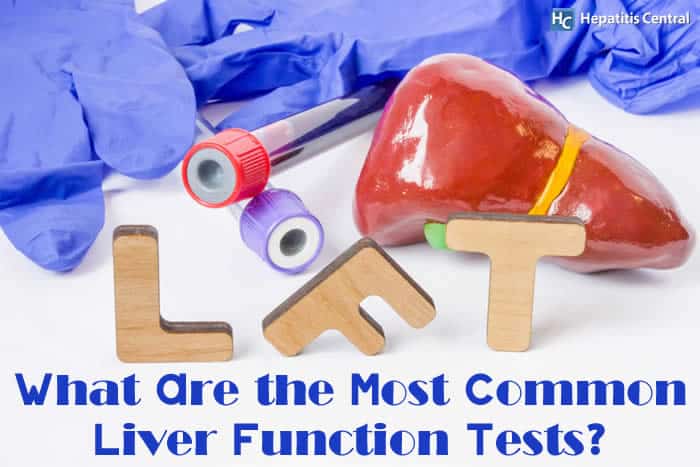What Are the Most Common Liver Function Tests?


What Are Liver Function Tests?
A trusted route for evaluating how well your liver is working – the liver function test (LFT) is a series of blood tests. Physicians choose from several different tests that check levels of particular proteins and enzymes in your blood. The combination of tests ordered depends on many factors, including whether it is for diagnostic or monitoring purposes.
Most of the body’s organs have a specific job to perform, making their function relatively straightforward.
Although this is an oversimplified summary, each of these major organs generally does the following:
- Your heart pumps blood throughout your body.
- Your lungs bring oxygen into the body and escort carbon dioxide out.
- Your kidneys remove waste and water in the form of urine.
In contrast, the liver organ is much more complex.
In general, your liver:
- assists with food digestion
- stores energy
- removes toxins from your bloodstream
- manufactures many hormones, blood clotting factors, and other vital substances
Because your liver has so many essential responsibilities, detecting a problem in this organ typically requires a multi-faceted approach:
- Abnormal liver function test results don’t always indicate liver disease.
- Some LFTs measure how well your liver is performing its normal functions of producing protein and clearing bilirubin, a blood waste product.
- Other liver function tests measure enzymes that liver cells release in response to damage or disease.
What Are Liver Function Tests Used For?
Liver function tests are used for several different reasons, including:
- Screening for liver infections, such as hepatitis
- Monitoring disease progression (and determining the effectiveness of a treatment)
- Measuring the severity of a disease, especially to assess the degree of scarring in the liver
- Monitoring possible side effects of medications
10 Common Liver Function Tests
Liver function tests may include liver enzyme tests, liver protein tests, and bilirubin tests:
- Alanine Transaminase (ALT) – ALT is a measurement of an enzyme that is primarily found in the liver. Alanine transaminase helps the body metabolize protein. When the liver is damaged, ALT is released into the bloodstream. Consistently high levels of ALT in the blood may be a sign of liver damage. Normal levels of ALT are between 7 and 55 units per liter (U/L).* (ALT was previously referred to as serum glutamic-pyruvic transaminase, SGPT.)
- Aspartate Transaminase (AST) – AST is a measurement of an enzyme found in large amounts in your liver and other parts of your body. Aspartate transaminase helps metabolize alanine, an amino acid. Like ALT, AST is normally present in the blood at low levels. However, high levels of AST can be a sign of liver damage, disease or muscle damage. Normal levels of AST are between 8 and 48 U/L.* (AST was previously referred to as serum glutamic-oxaloacetic transaminase, SGOT.)
- Alkaline Phosphatase (ALP or AP) – ALP is a measurement of an enzyme found in large amounts in the liver, bile ducts, and bone. Alkaline phosphatase helps break down proteins in the body and exists in different forms, depending on where it originates. It is made in the bones, intestines, pancreas, and kidneys. In pregnant women, ALP is also made in the placenta. High levels of ALP may indicate liver damage, a blocked bile duct, or certain bone diseases. Normal levels of ALP are between 45 and 115 U/L.*
- Gamma-glutamyl transpeptidase (GGT or GGTP) – GGT is a measurement of an enzyme found in large amounts in the liver, bile ducts, and pancreas. GGT acts as a transport molecule, helping to move other molecules around the body. It plays a significant role in helping the liver metabolize drugs and other toxins. High levels of GGT can be a sign of liver or bile duct damage. Normal levels of GGT are between 9 and 48 U/L.*
- Lactate dehydrogenase (LD or LDH) – LD is an enzyme found in the liver that is involved in energy production. Elevated LD levels may indicate liver damage – but can also be elevated in many other disorders. Normal LD levels vary widely depending on age; for children a normal range is between 60 and 170 U/L, and for adults a normal range is between 100 and 190 U/L.*
- Total protein (TP) – Total protein measures the amount of protein in your blood. The two main proteins found in the blood are globulins and albumin. Low levels of TP may indicate liver damage or disease. Normal levels of total protein are between 6.3 and 7.9 grams per deciliter (g/dL).* A total protein test can also check the amount of albumin you have compared to globulin, also known as the “A/G ratio.” Healthy people have a little more albumin than globulin, but this is not the case when ill.
- Albumin – A protein made in the liver, measuring albumin assesses how well your liver is making the proteins that your body needs. A low albumin level can be a sign of liver damage. Normal levels of albumin are between 3.5 to 5.0 g/dL.*
- Globulin – Globulin is a protein made in your liver that helps the immune system fight infections. Low globulin levels can be a sign of liver damage or other conditions. Normal levels of globulin are between 2.0 and 3.5 g/dL.*
- Bilirubin – A yellow substance produced during the normal breakdown of red blood cells, bilirubin passes through the liver and is excreted in stool. Elevated levels of bilirubin (jaundice) might indicate liver damage or disease, or certain types of anemia. If the liver is damaged, bilirubin can leak out of your liver and into your blood, causing jaundice (yellowing of the skin and eyes) or in the urine (darkening the color). Normal levels of bilirubin in adults can be up to 1.2 mg/dL.
- Prothrombin time (PT) – Prothrombin is a protein made in your liver and helps with clotting blood. PT is the amount of time it takes your blood to clot. Because the liver makes clotting factors, an increased PT may indicate liver damage. High PT can also be due to taking blood-thinning medications. Normal PT is 9.5 to 13.8 seconds.*
*Different laboratories will have different normal ranges. In addition, normal values vary based on age and sex.
Because of the multi-faceted interactivity of the liver and the human body, just running one of the tests listed above is insufficient for drawing conclusions. Different combinations of the liver functions tests described above will give different sets of information.
For example:
- The AST, ALT and AP tests are most useful to make a distinction between injury to liver cells and injury to the bile ducts.
- The GGTP level is liver specific, but is also very sensitive – frequently elevated when no liver disease is apparent. An isolated elevation of GGTP does not need to be further evaluated unless there are additional clinical risk factors for liver disease.
- GGTP levels can be increased with smoking cigarettes or consumption of small amounts of alcohol.
- The LDH test is insensitive and nonspecific because lactate dehydrogenase is present in tissues throughout the body.
- Elevations of AST may be seen in acute injury to cardiac or skeletal muscle.
- Slightly elevated ALT may occasionally be seen in skeletal muscle injury or even after vigorous exercise.
- In clinical practice, it is common to see elevations of AST, ALT or both in common conditions (not related to the liver), such as myocardial infarction and rhabdomyolysis.
- Both ALP and GGT are elevated in disease of the bile ducts and in some types of liver disease, but only ALP will be elevated in bone disease.
Conclusion
Physicians will typically prescribe specific combinations of liver function tests depending on what information they are looking for. To be used as an effective diagnostic or monitoring tool, LFTs are intended to be grouped together – not used as stand-alone tests.
https://labtestsonline.org/tests/gamma-glutamyl-transferase-ggt, Gamma-Glutamyl Transferase (GGT), Retrieved November 16, 2018, American Association for Clinical Chemistry, 2018.
https://liverfoundation.org/for-patients/about-the-liver/the-progression-of-liver-disease/diagnosing-liver-disease/#1503683241165-6d0a5a72-83a9, Diagnosing Liver Disease – Liver Biopsy and Liver Function Tests, Retrieved November 18, 2018, American Liver Foundation, 2018.
https://medlineplus.gov/liverfunctiontests.html, Liver Function Tests, Retrieved November 15, 2018, US National Library of Medicine, 2018.
http://www.clevelandclinicmeded.com/medicalpubs/diseasemanagement/hepatology/guide-to-common-liver-tests/, Liver Test Interpretation - Approach to the Patient with Liver Disease: A Guide to Commonly Used Liver Tests, AR Murali, MD, WD Carey, MD, Retrieved November 15, 2018, The Cleveland Clinic Foundation, 2018.
https://www.accureference.com/laboratory-test-directory/g/gamma-glutamyl-transpeptidase-ggt-or-ggtp/, Gamma glutamyl transpeptidase (GGT or GGTP), Retrieved November 18, 2018, Accu Reference Medical Labs, 2018.
https://www.healthline.com/health/alp, ALP (Alkaline Phosphatase Level) Test, Retrieved December 9, 2018, Healthline Media, 2018.
https://www.healthline.com/health/gamma-glutamyl-transpeptidase, Gamma-glutamyl transpeptidase (GGT) test, Retrieved December 9, 2018, Healthline Media, 2018.
https://labtestsonline.org/tests/lactate-dehydrogenase-ld, Lactate Dehydrogenase (LD), Retrieved December 9, 2018, American Association for Clinical Chemistry, 2018.
https://www.mayoclinic.org/tests-procedures/liver-function-tests/about/pac-20394595, Liver Function Tests, Retrieved November 15, 2018, Mayo Foundation for Medical Education and Research, 2018.
https://www.webmd.com/hepatitis/liver-function-test-lft#1, What is a Liver Function Test?, Retrieved November 18, 2018, WebMD, LLC, 2018.







